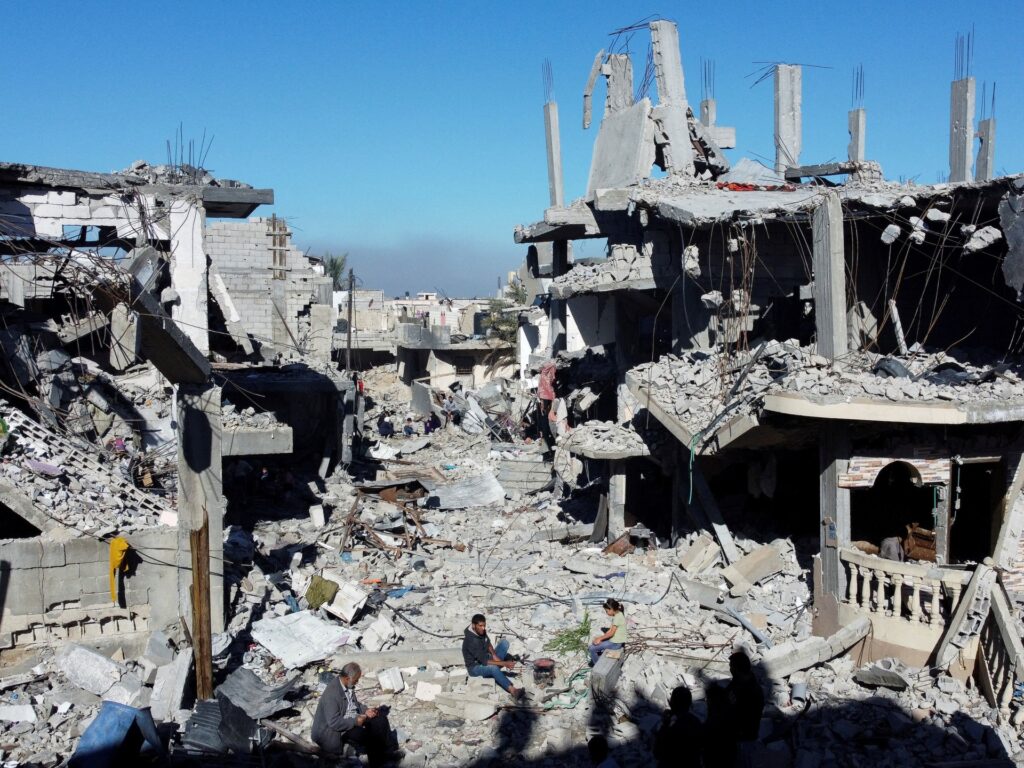A few hours before the agreed pause in the fighting in Gaza, Israel, Hamas and the intermediaries who negotiated between them were again in a frenzy of activity on Wednesday.
The initial truce was scheduled to last until Monday, but Hamas decided to accept Israel’s offer to extend the ceasefire by one day for every 10 captives released. As the initial deadline approached, an extension was announced, but only for two days.
Two is always better than nothing, and the extra two days gave Qatari and Egyptian mediators more time to find a way to convince both sides to further extend the truce or turn it into a ceasefire. permanent.
This has not been easy. Although the intermediary negotiations were difficult, long and often tedious, they ultimately led to certain results and an agreement in principle which led to the initial four-day truce and indirectly to its two-day extension. During initial negotiations, Israel unilaterally declared that the pause could be extended by the release of additional captives, so there was little more to negotiate. Yet as time passed, negotiations by Qatari and Egyptian intermediaries seemed to drag on, and lists of detainees to be released continued to be agreed upon and accepted later and later each day; at one point, Hamas even threatened to stop the process and let the truce fail.
Today, Wednesday evening, the situation seems more complicated than ever. Hamas announced that it was requesting an additional four-day extension and even suggested that it was prepared to negotiate the release of all prisoners it holds, in exchange for a more lasting cessation of hostilities. At the same time, Israel said it welcomed the possible release of additional captives, but sent mixed messages about continuing the pause.
In such an atmosphere of uncertainty mixed with anxiety and hope, international mediators are increasing their efforts than ever before. For two days, they have been joined in Qatar by the highest officials of the American, Israeli and Egyptian intelligence services.
No announcement has been made about the presence of their Hamas counterparts, but it is very difficult to imagine that the Palestinian side would not be represented in such an intelligence summit.
One might expect that, with the experience of two rounds of negotiations, it would be easier to reach agreements on the continuation and expansion of the agreements. However, there are many signs that the situation is getting complicated and that negotiations risk getting bogged down.
How is it that after the overwhelming optimism that marked the massive weekend celebrations in which former captives returned to their communities, the talks are now on the brink of failure with the real prospect of a resumption of fighting on Thursday?
There are several reasons for the apparent reluctance of Israel and Hamas to extend the truce by exchanging more captives.
First, tactical and strategic military reasons, mainly on the Israeli side. In recent days, several Israeli military officials have indicated that they would prefer that the current extension of the two-day break be the last. The generals told political leaders that the military believes fighting should resume Thursday morning.
From the start of the armed intervention, the Israeli army feared having to enter the war without clearly defined strategic objectives. I warned that soldiers hate “open-ended” tasks. Prime Minister Benjamin Netanyahu has repeatedly said that his goal is to win the war by destroying Hamas, but he has obviously never translated this into clear, measurable orders and tasks. Generals prefer to be told, “Go ahead and do it, if and when you succeed, your job is done.” Their eagerness to return to fighting in no way means that they are bloodthirsty; on the contrary, it shows those who want to listen that they are realistic.
Following the October 7 attacks, the Israeli army mobilized 360,000 reservists, deploying them alongside the standing army of 150,000 soldiers. As the fighting continued, every reservist and unit, whether in Gaza or along the northern front against Hezbollah, knew exactly what their task and objective was. They were focused, in a military mindset, and were not overtly influenced by the atmosphere among civilians.
But as they stopped for four days and then two more days, many returned home for a short rest and were exposed to the doubts, uncertainties, fears and hopes of their families and loved ones. For a few days they lived almost like civilians, but as the initial break was due to expire on Monday, they should have returned to their units on Sunday afternoon – when the extension was announced. The military bureaucracy then had to decide whether to give them an extra day or two at home or rotate the soldiers, with the eventual new group getting only two days off, and so on.
Another extension would further complicate leave and rotation logistics, but prolonged semi-civilian life could also harm the resolve to fight.
After October 7, the Israeli national adrenaline was at its peak and everyone was ready to fight. Now, seeing that the politics of the country are in disorder; the leaders are in poorly hidden disarray and the Prime Minister is clearly troubled, shaken and insincere, the soldiers might start to hesitate.
Aware of the potential problems with morale and determination, the generals obviously prefer to end the fighting rather than endure more stop-go-stop-go orders which, in all wars, prove detrimental to the combat capabilities of the generals. ‘an army.

